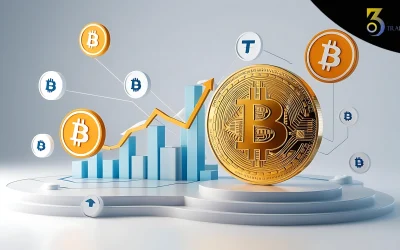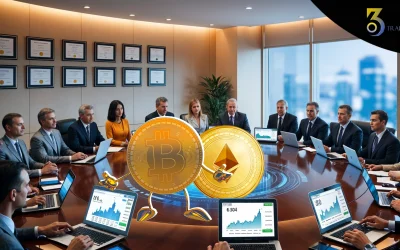While Bitcoin remains the dominant force in the cryptocurrency world, its rise has given birth to a diverse and expansive ecosystem of alternative coins, or “altcoins.” These digital currencies offer a range of functionalities and features that go beyond Bitcoin’s role as digital gold. Altcoins—whether they aim to improve upon Bitcoin’s technology, introduce innovative use cases, or explore new economic models—are essential in shaping the future of decentralized finance. In this article, we’ll explore the altcoin universe and the unique value propositions that are driving its growth.
1. What Are Altcoins?
Altcoins are simply any cryptocurrency that is not Bitcoin. The first of these, Litecoin, was created in 2011, aiming to improve transaction speeds and reduce fees compared to Bitcoin. Since then, thousands of altcoins have emerged, each serving different purposes. From privacy-focused coins like Monero to smart contract platforms like Ethereum, altcoins form a vast and varied landscape of digital assets, each bringing something unique to the table.
2. Ethereum (ETH) – The Smart Contract Pioneer
If Bitcoin is digital gold, Ethereum can be seen as digital oil—fueling decentralized applications (dApps) and smart contracts. Launched in 2015, Ethereum introduced a programmable blockchain, allowing developers to build decentralized applications on top of its network. This functionality has revolutionized the cryptocurrency space, enabling the creation of decentralized finance (DeFi) platforms, non-fungible tokens (NFTs), and many other blockchain-based innovations.
Ethereum’s native cryptocurrency, Ether (ETH), is used to pay for transactions and computational services on the network. As the second-largest cryptocurrency by market cap, Ethereum has established itself as the most significant player among altcoins, with the potential to impact industries beyond just finance, including gaming, real estate, and art.
3. Ripple (XRP) – Revolutionizing Cross-Border Payments
Ripple’s XRP is designed to facilitate fast, low-cost international payments. Traditional cross-border payment systems, like SWIFT, can be slow and expensive, often taking days to settle. Ripple’s technology aims to revolutionize this process by enabling real-time settlement and significantly reducing fees.
While XRP’s status as a centralized cryptocurrency has drawn criticism from some in the crypto community, its utility in bridging different currencies for quick, global transfers has made it a favorite among financial institutions. Ripple’s partnerships with major banks and financial companies demonstrate the potential for blockchain to reshape traditional finance systems.
4. Litecoin (LTC) – Digital Silver
As one of the earliest altcoins, Litecoin was created by Charlie Lee in 2011 to improve upon Bitcoin’s perceived inefficiencies. While Bitcoin was designed to be a secure store of value, Litecoin focuses on speed and cost-effectiveness, positioning itself as the “silver” to Bitcoin’s “gold.”
Litecoin offers faster transaction confirmation times and lower fees, making it a popular choice for smaller, everyday transactions. With a similar structure to Bitcoin but with technical improvements, Litecoin has maintained its position as one of the top cryptocurrencies over the years, even as new competitors have entered the market.
5. Polkadot (DOT) – Interoperability and a Multi-Chain Future
One of the more recent altcoins to gain traction is Polkadot, which focuses on solving a key issue in blockchain technology: interoperability. Polkadot enables different blockchains to communicate and share data seamlessly. In contrast to Ethereum’s single-chain model, Polkadot envisions a “multi-chain” future where multiple blockchains, each optimized for different purposes, work together in harmony.
Polkadot’s goal is to build a truly decentralized internet, known as Web 3.0. Its native token, DOT, is used for governance and staking, allowing holders to vote on proposed changes to the network and secure the system by locking up their coins.
6. Cardano (ADA) – A Peer-Reviewed Blockchain
Cardano distinguishes itself by its research-driven approach. Founded by Charles Hoskinson, one of the co-founders of Ethereum, Cardano is built on peer-reviewed academic research and aims to create a secure, scalable, and sustainable blockchain network.
Cardano’s native cryptocurrency, ADA, is used to power the network and is becoming increasingly popular for smart contracts and decentralized applications. With a strong focus on security, Cardano has positioned itself as a competitor to Ethereum, but with a slower, more methodical development process. Its recent upgrades aim to make it more competitive in the DeFi space.
7. Monero (XMR) – Privacy at the Core
Privacy is a growing concern in the digital age, and Monero stands out by offering unparalleled transaction anonymity. While Bitcoin transactions are pseudonymous (linked to public wallet addresses), Monero employs advanced cryptographic techniques to ensure that transaction details—such as the sender, recipient, and amount—are completely private.
Monero’s focus on privacy makes it a go-to option for users who value anonymity in their financial dealings. However, this emphasis on privacy has also drawn scrutiny from regulators concerned about its use in illicit activities.
8. Solana (SOL) – High-Speed Blockchain for DeFi and dApps
Solana has rapidly gained attention for its incredible transaction speeds and low fees. It’s one of the fastest-growing blockchains, particularly within the DeFi space. Solana can process thousands of transactions per second, compared to Bitcoin’s 7 and Ethereum’s 15-30, making it an attractive option for decentralized finance applications that require high throughput.
Solana’s native token, SOL, is used for transaction fees and staking within the network. Its rapid adoption and technological innovations position Solana as a major player in the future of decentralized finance and blockchain applications.
9. Chainlink (LINK) – Bridging Blockchains with the Real World
While many altcoins focus on improving blockchain infrastructure, Chainlink aims to connect blockchains with real-world data. Chainlink’s decentralized oracles allow smart contracts on blockchains to interact with external data sources, such as APIs, real-world events, and payment systems.
This functionality has opened the door for a variety of new applications, from DeFi protocols that require accurate pricing data to insurance contracts that trigger based on weather conditions. Chainlink’s LINK token is used to pay for these services, and its role in connecting blockchain with real-world data has made it indispensable in many DeFi ecosystems.
Conclusion: The Expanding Universe of Altcoins
While Bitcoin laid the foundation for decentralized finance, the altcoin universe showcases the diversity and potential of blockchain technology. From improving cross-border payments to enabling smart contracts, privacy, and decentralized applications, altcoins are expanding the boundaries of what cryptocurrencies can do.
As blockchain technology continues to evolve, so too will the altcoin landscape. Whether you’re an investor, developer, or crypto enthusiast, exploring the altcoin universe offers a glimpse into the future of finance, technology, and beyond. With thousands of altcoins now in existence, the possibilities are endless—and the journey is just beginning.




